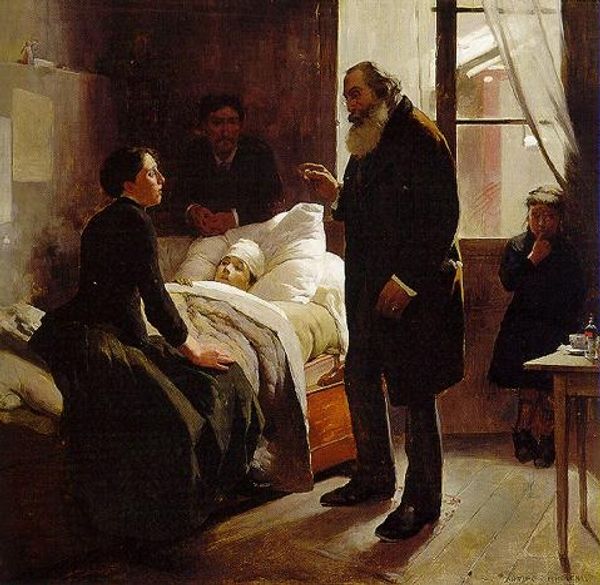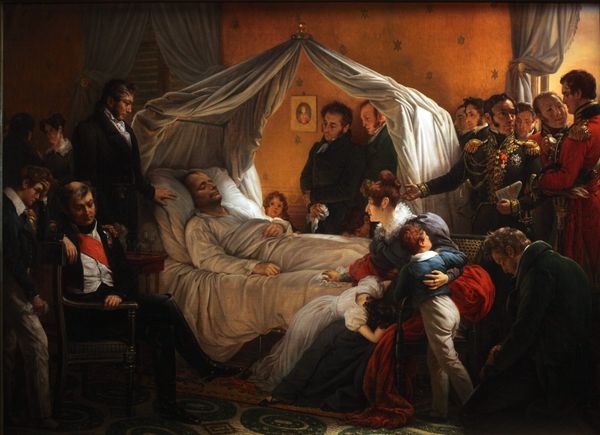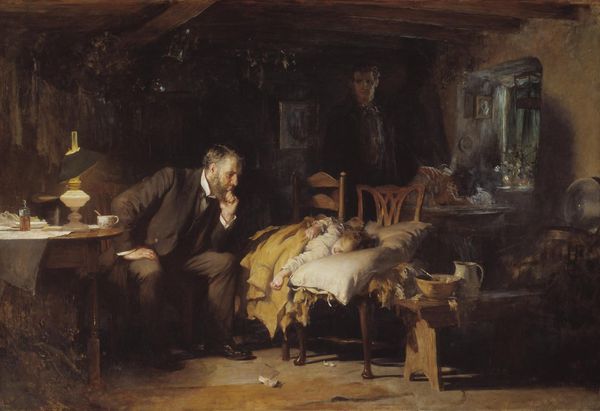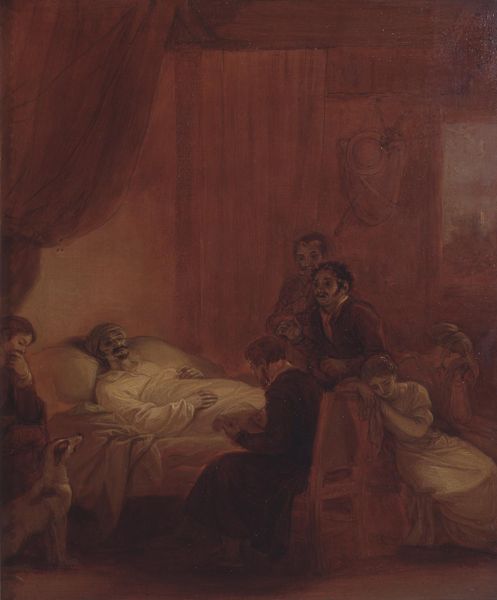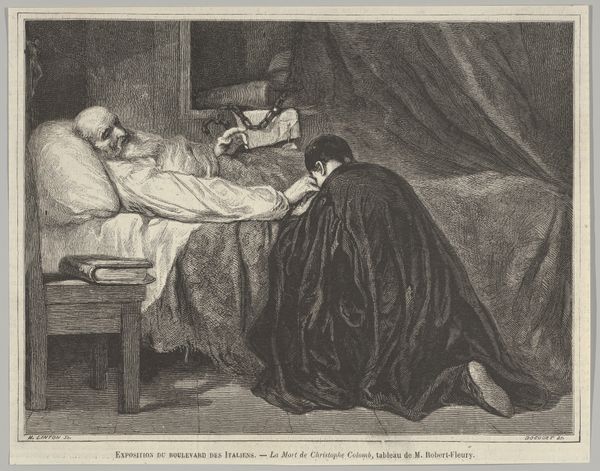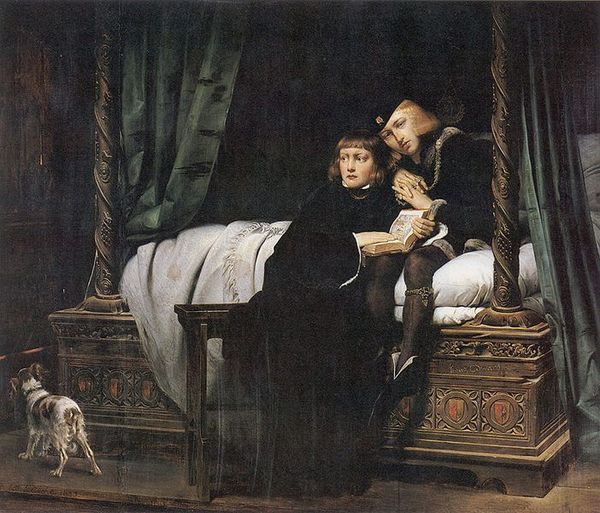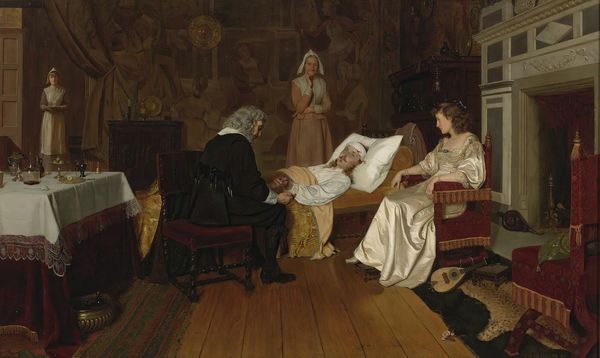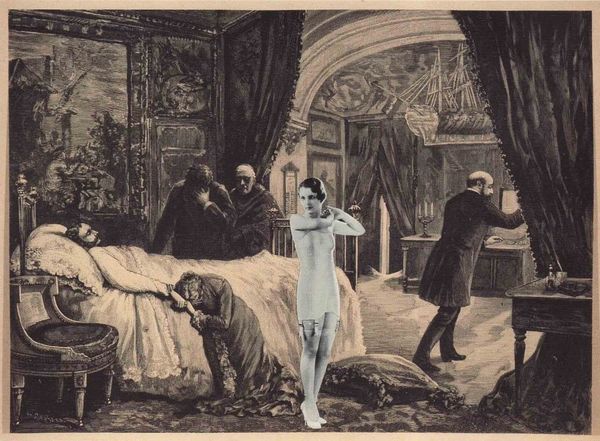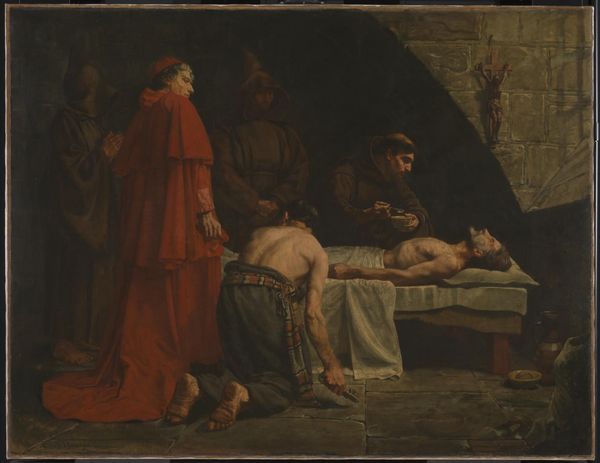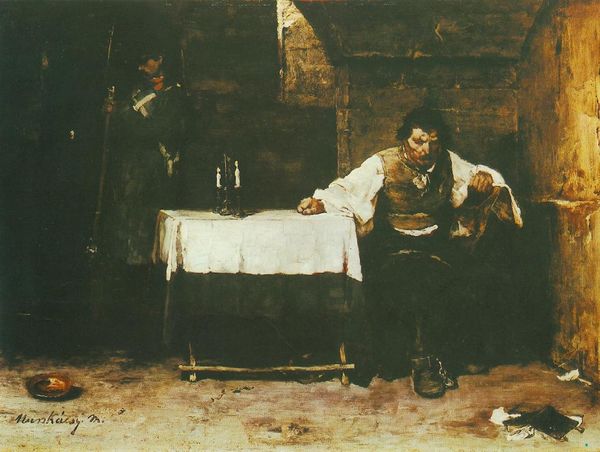
oil-paint
#
portrait
#
narrative-art
#
oil-paint
#
oil painting
#
romanticism
#
history-painting
Copyright: Public Domain: Artvee
Curator: This piece before us, titled "The Death of Géricault," was rendered around 1824 by Ary Scheffer, using oil paints to depict a truly somber scene. Editor: My immediate impression is of a very palpable stillness, a profound hush. The color palette contributes significantly—dark browns and muted tones lend it a heavy, almost claustrophobic air. Curator: Indeed. It is important to consider Romanticism’s obsession with mortality, not as mere morbidity, but as a commentary on social and political power structures of the period. The pathos displayed signifies resistance. Editor: Pathos is definitely the dominant symbolic mode. Note the downcast gaze, the figure hunched in grief. It's almost a pietà-like composition, repositioned in a domestic setting. We can trace the symbol of mourning across cultures, reflected in body language itself. Curator: And the fact that it depicts another artist, Géricault, suggests an internal conversation about art’s role and its often tragic consequences within a society marked by inequality. It elevates the artistic figure while also mourning lost potential within that context. Editor: Yes, I wonder if Scheffer consciously employed the visual trope of the "deathbed scene," evoking paintings of saints or martyrs. But instead of religious ecstasy, we find earthly sorrow. This feels like a secular canonization, a moment of immortalizing a figure for posterity, via paint. Curator: Precisely. Scheffer's choice to immortalize Géricault underscores how crucial solidarity among marginalized figures, artists included, is when facing a socio-political system determined to disempower certain individuals. The act of painting becomes a gesture of defiance. Editor: Looking closely, I detect details - a painting hanging on the wall in the background. Was Scheffer incorporating subtle clues or symbols about Géricault's legacy? The composition itself becomes an echo chamber. Curator: He absolutely positions Géricault as a luminary fighting societal constraints. By focusing on this single moment, Scheffer uses the tragedy to speak more broadly about injustice. Editor: What strikes me now is the intimate quality. Scheffer hasn't created a grand historical drama. It's a quiet, concentrated moment of grief—laden with meaning but acutely private. I feel like I am seeing the cultural codes and emotional language of the 19th century displayed candidly. Curator: I agree. What began as observation allows us to interpret art’s engagement in broader cultural power struggles. Editor: This painting has been very affecting. A good example of how symbolism can convey shared human experiences across history.
Comments
No comments
Be the first to comment and join the conversation on the ultimate creative platform.
